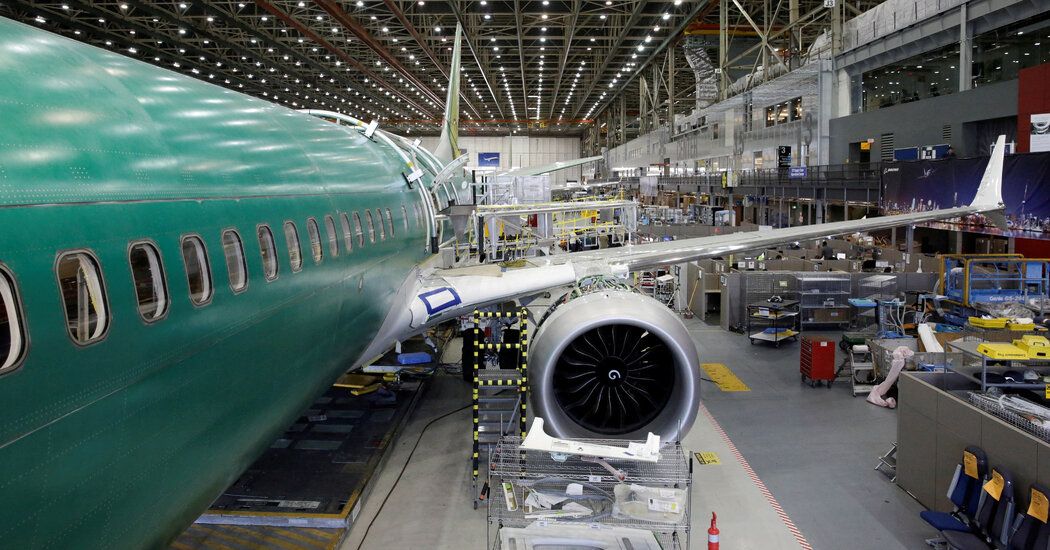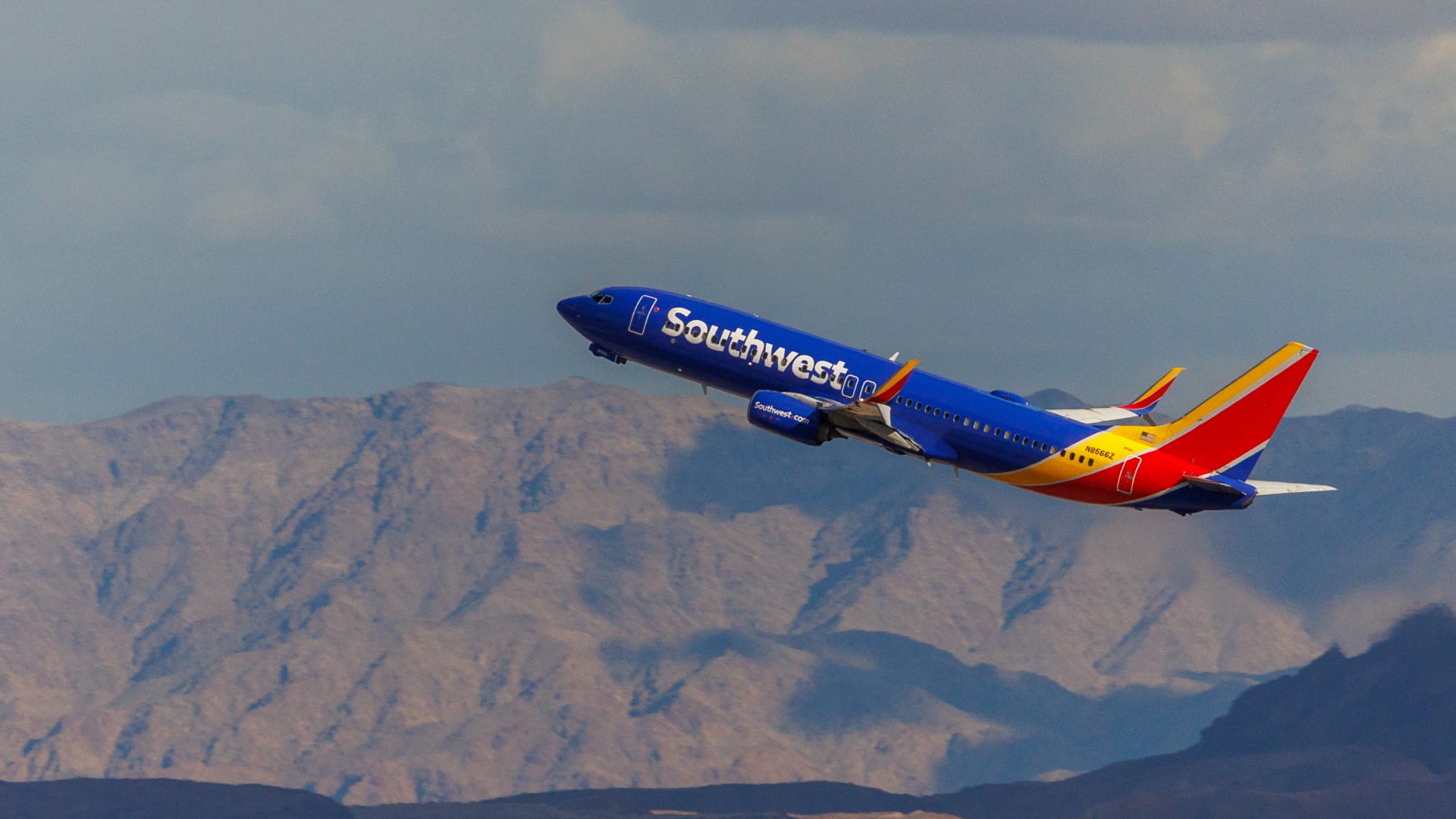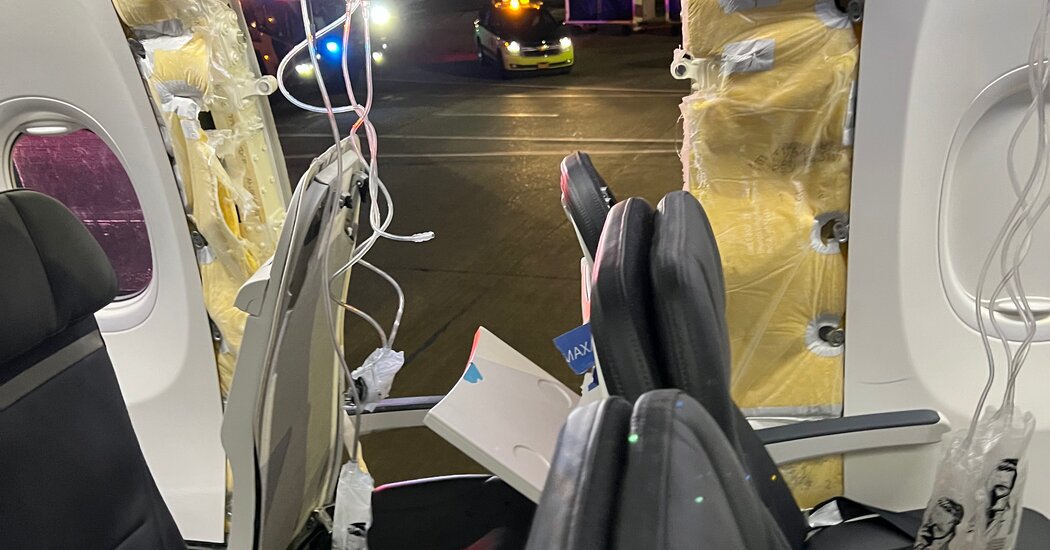Boeing had hoped that 2024 would be the year it would significantly increase production of its popular Max planes. But less than a month into the year, the company is struggling to assure airline customers that it will still be able to deliver on its promises.
That's because the Federal Aviation Administration said Wednesday it would limit the planemaker's production until it had confidence in Boeing's quality control practices. On January 5, a panel exploded the body of a Boeing 737 Max 9 shortly after takeoff, terrifying passengers on an Alaska Airlines flight and forcing pilots to make an emergency landing at Portland International Airport in Oregon. Almost immediately, the FAA grounded some Max 9s.
Since then, details have emerged about the production of the plane at Boeing's Renton, Washington facility, intensifying scrutiny of the company's quality control. Boeing workers opened and then reinstalled the panel about a month before the plane was delivered to Alaska Airlines.
The directive is another setback for Boeing, which had been planning to increase production of its Max series of planes to more than 500 this year, from about 400 last year. It also planned to add another assembly line at a factory in Everett, Washington, a major Boeing production center north of Seattle.
As part of the FAA's announcement Wednesday, it also approved inspection and maintenance procedures for the Max 9. Airlines can return the planes to service once they have followed those instructions. United Airlines said Thursday that it could resume flying some of those planes on Friday.
The move is another potential blow to airlines. Although demand for flights returned strongly after pandemic lockdowns and travel restrictions were eased, airlines have not been able to fully take advantage of that demand. Companies have not been able to buy enough planes or hire enough pilots, flight attendants and other workers they need to operate flights. An increase in the cost of jet fuel after Russia invaded Ukraine also hurt profits.
Many airline executives are now evaluating how the FAA order would affect plans for their fleets for the next decade or more.
When introduced, the narrow-body, fuel-efficient planes were supposed to help the manufacturer compete with Airbus, which has far surpassed Boeing in sales. But the Max series has been plagued by mechanical and safety problems, including two crashes in 2018 and 2019 that killed nearly 350 people and led to the Max 8 being grounded for nearly two years.
In its announcement Wednesday, the FAA did not say how quickly it would lift the pause on ramping up production, but instead gave Boeing conditions it must meet before doing so. He said “it won't be back to normal for Boeing.”
“We will not accept any requests from Boeing to expand production or approve additional production lines for the 737 Max until we are satisfied that the quality control issues discovered during this process are resolved,” said agency administrator Mike Whitaker.
Boeing's stock price fell about 6 percent on Thursday and is down about 19 percent since Jan. 5.
In 2023, Boeing produced about 32 of its 737 planes per month on average, with plans to increase to 38 by the end of last year. It aimed to further increase production to 42 per month in 2024, a year-over-year increase of more than 100 aircraft, and to about 50 per month in 2025. Before the Max 8 was grounded in 2019, Boeing had been producing 52 Max planes per month.
Many airlines said they welcomed the FAA's decision to keep Boeing's production in check until regulators were convinced the company had improved quality and addressed safety issues. But some airline executives also moved quickly to readjust their fleet plans under the assumption that the planes they expected would now arrive months or, in some cases, years later than they expected.
Alaska Airlines, which has a fleet of 231 Boeing 737 planes, had planned to add 23 Max planes to its fleet in 2024, but said Thursday it expected “many of them to be delayed.”
“We have the right number of aircraft to fly on our current schedule and take our guests where they want to go,” the company said in a statement. “We are still working to understand the implications of the FAA's recently announced capping of aircraft production at Boeing.”
Southwest Airlines, which was expecting more than 500 Max planes in October, said it would “reduce the number of Boeing 737 Max aircraft deliveries” it expected from the manufacturer and was no longer expecting any Max 7 planes, something the FAA has not done. certified yet, in 2024.
Still, some analysts said it was unclear what impact the FAA order would have.
“The FAA restriction on ramp may be irrelevant, at least for the move to 42 years, as investors had already begun to assume a longer time at 38 years to drive stability and higher quality” Deutsche Bank analysts said in research. note on Thursday, referring to the number of 737 Max planes that Boeing makes in a month.
At least one airline was confident the disruptions would not affect its Boeing orders. Ryanair, the European low-cost airline, said in a statement that the manufacturer had “assured Ryanair that grounding the Max 9 and maintaining rather than increasing current monthly production will not further delay Ryanair deliveries” for the summer of 2024 and the summer of 2025.
While the FAA's decision to limit production doesn't help, Boeing was also struggling to increase production for another reason: It and its suppliers have not been able to replace all the workers who were laid off, retired or resigned during the pandemic. Finding new qualified workers has been difficult and it is increasingly taking more time to train them, said Christopher Raite, senior analyst at Third Bridge, a research firm. “The job base just doesn't exist.”
Boeing has two Max aircraft models in production, the Max 8 and Max 9, and two other versions, the Max 7 and Max 10, that are awaiting FAA approval before they can fly.
Even before the Jan. 5 Alaska Airlines Max 9 incident, airlines were limited in how much they could grow by adding flights or routes. In April, International Air Transport Authority Chairman Willie Walsh said capacity would remain diminished through 2025 and possibly beyond.
Jonnathan Handshoe, airline analyst for CFRA Research, said Boeing's safety and production problems could worsen a precarious situation for airlines.
Delays in deliveries of new planes, Handshoe said, would mean airlines will spend more on fuel than they expected because they will be forced to use older, less fuel-efficient planes that they had hoped to scrap or sell. In addition to larger supply chain problems, Handshoe said, the new labor agreements give big raises to pilots, flight attendants, mechanics and other workers.
In recent weeks, some airline bosses have taken the unusual step of publicly punishing Boeing for its safety lapses and production delays. Hubert Horan, an aviation analyst, said airlines were trying to get a better deal with Boeing on large orders they had already placed.
“There are typically provisions in contracts like these for significant penalties and cancellation if significant problems prevent Boeing from fulfilling the contract,” Horan said. “In part, the recent public statements are part of the negotiation over the final terms of sanctions and discounts.”
On a call with analysts Thursday, Alaska CEO Ben Minicucci said the company's partnership with Boeing was a key part of the airline's future. The company had 185 Max planes on order, and Minicucci noted that he had been happy with the Max until the latest incident.
But the grounding of Max 9 planes for weeks and Boeing's production cap will hurt companies like Alaska. The company said it expected the FAA standstill alone would cost it $150 million (although it also expected to be “compensated” for that loss), and Minicucci had said in a recent interview that he was angry at Boeing for its safety and production failures. .
“We're going to hold Boeing's feet to the fire to make sure good airplanes come out of that factory,” Minicucci said.










